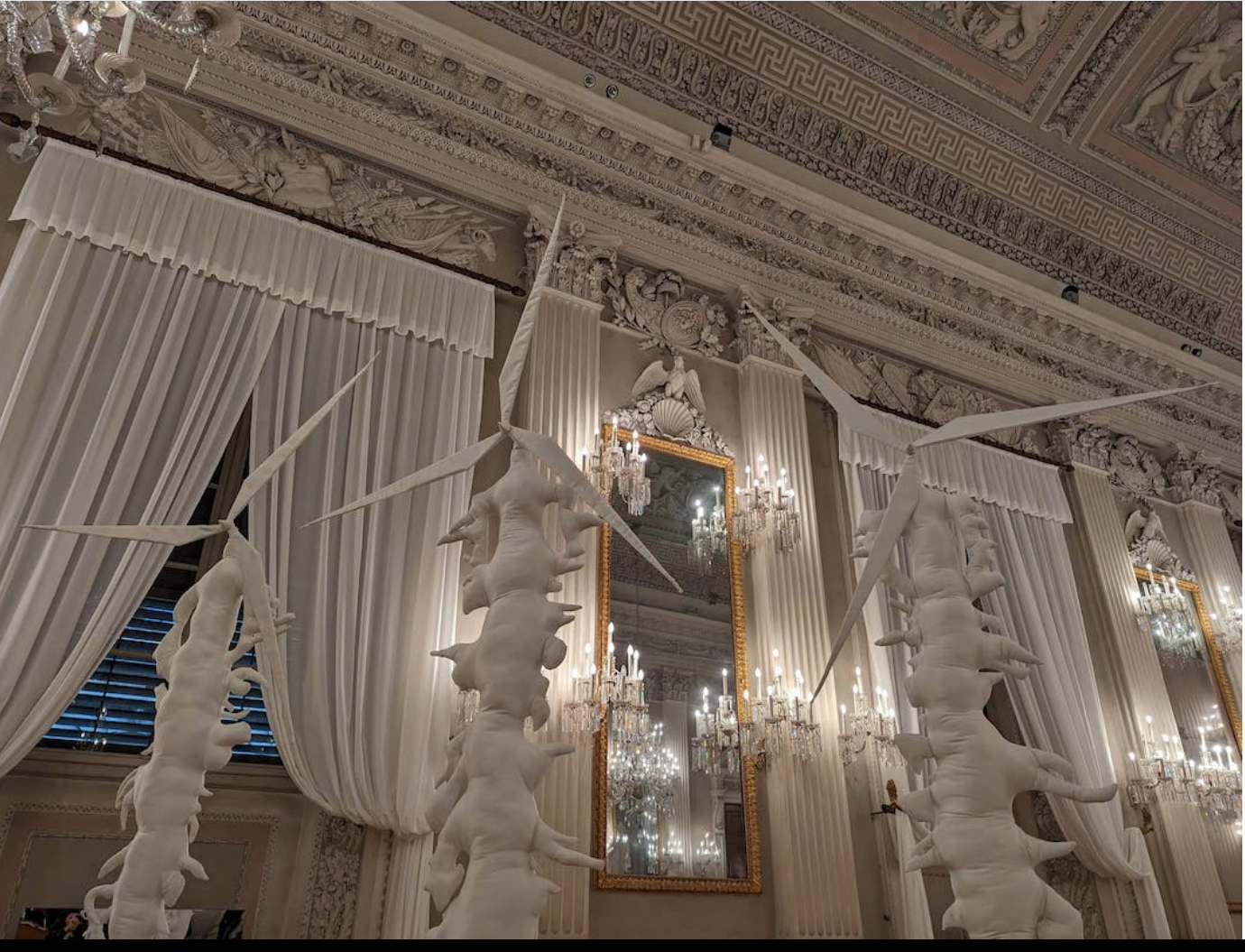‘First Act:’ Spiritual Symbology for the Environment at Pitti

Until January 29, 2023: FIRST ACT by Marya Kazoun. Sala Bianca, Pitti Palace. Open Tuesday to Sunday, 8.15 am – 6.30 pm. Closed Monday. Admission to the Pitti Palace is €10, reduced price is €2, while on Wednesday afternoon after 3 pm a discounted entrance of €5 is offered.
Using the religious sphere as her creative influence, Lebanese-Canadian artist, Marya Kazoun, unveils a contemporary interpretation in her installation, “First Act.” Using sculpture art and a diverse palette of media, she urges viewers to reimagine the nativity scene, through an ecological lens.
With the exhibition, Kazoun recognizes the parallel between the religious birth of the ‘new’ world, and the origins of change for a cleaner future environment. By using themes so deeply rooted in the values of society, the artist creates a common language to propose a future free from pollution, global warming, and climate crises. Otherwise interpreted as an artistic fusion between the past, the present, and the future – Marya Kazoun establishes a moment in time for viewers to acknowledge, reflect and act.
The three silhouettes of the Magi (or the Three Wise Men) act as the protagonists of the metaphysical space. Covered in white fabric, the 2.60 meter figures are symbolized by the wind turbines that extend out from above them. The transformational growth of Biblical figures into energy-efficient machines, highlights how the preservation of heritage and the conservation of the environment could stand in harmony, rather than proposing conflict. A swarm of Murano glass locusts (crafted in Venice) ominously populate the floor, provoking a sense of urgency as they represent the ecological crisis and the risk of climatic ruin. This “swarm” not only creates a flow of movement through the exhibition space, but instills a gloomy, anxious feeling in spectators. Just as the environment crisis looms over the future of the planet, creating a similarly uncomfortable feeling to all that inhabits it.
At the center of Kazoun’s nativity scene is a spherical, glass sculpture – representing the newborn Jesus, or the birth of a new world. This seemingly delicate piece of art is surrounded by six figures arranged in pairs, which allude to important people in the Bible (Mary, Saint Joseph, etc) and the union between human beings. This artistic detail may hint at society’s role in the contemporary environmental crisis. Where we as humans look towards a fragile future, and unity between humanity and their ideology can become the catalyst for critical change.
As summarized by Marya Kazoun: “The whisperers of the wind have always inhabited this place, they are an extension of the voices of the past.” The abstract concept of the ‘wind’ being: a breath of the universe, an allusion to the environment, or a gust of knowledge originating from our Biblical past. The artist transforms Sala Bianca into a metaphorical window, from which the spectator can reinterpret the significance of the past, glimpse towards a foreboding future, and recognise their purpose within this complex realm. (Emma van Zuthem)
